Homemade Mandu (Korean Dumplings)
Mandu, Korean dumplings filled with juicy pork, cabbage, and glass noodles, are easier to make at home than you think. This homemade version is freezer-friendly and perfect any time of year—not just on Lunar New Year.
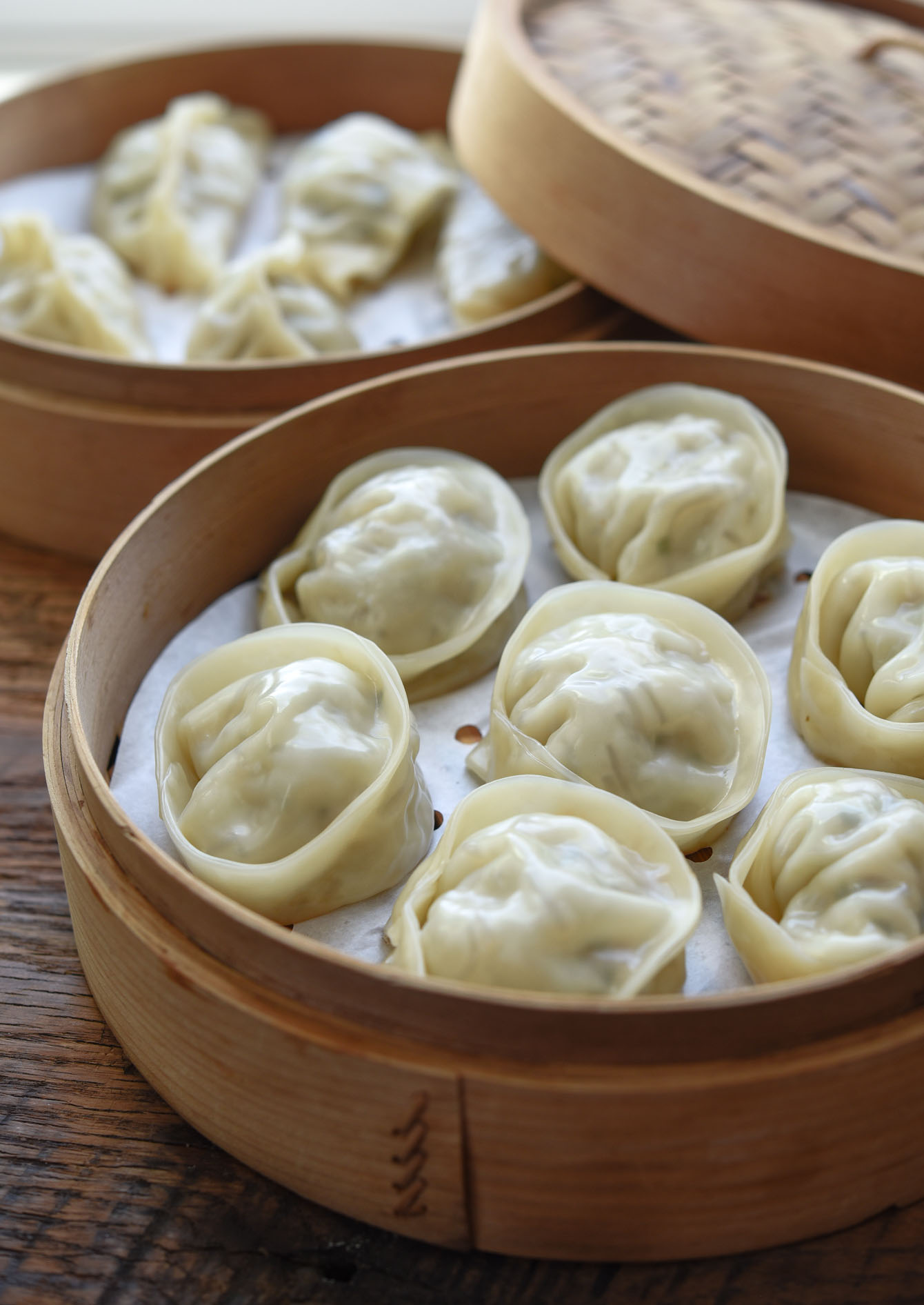
In my family, making mandu—Korean dumplings—was a must during the holidays, especially around Lunar New Year. My mom would prepare the pork and vegetable filling, and the rest of us would sit around the table folding dumplings, laughing, and sharing stories. It was a tradition that made the holiday feel whole.
These days, I don’t wait for a special occasion. Whenever we’re craving juicy pork dumplings, we make a big batch of homemade mandu together.
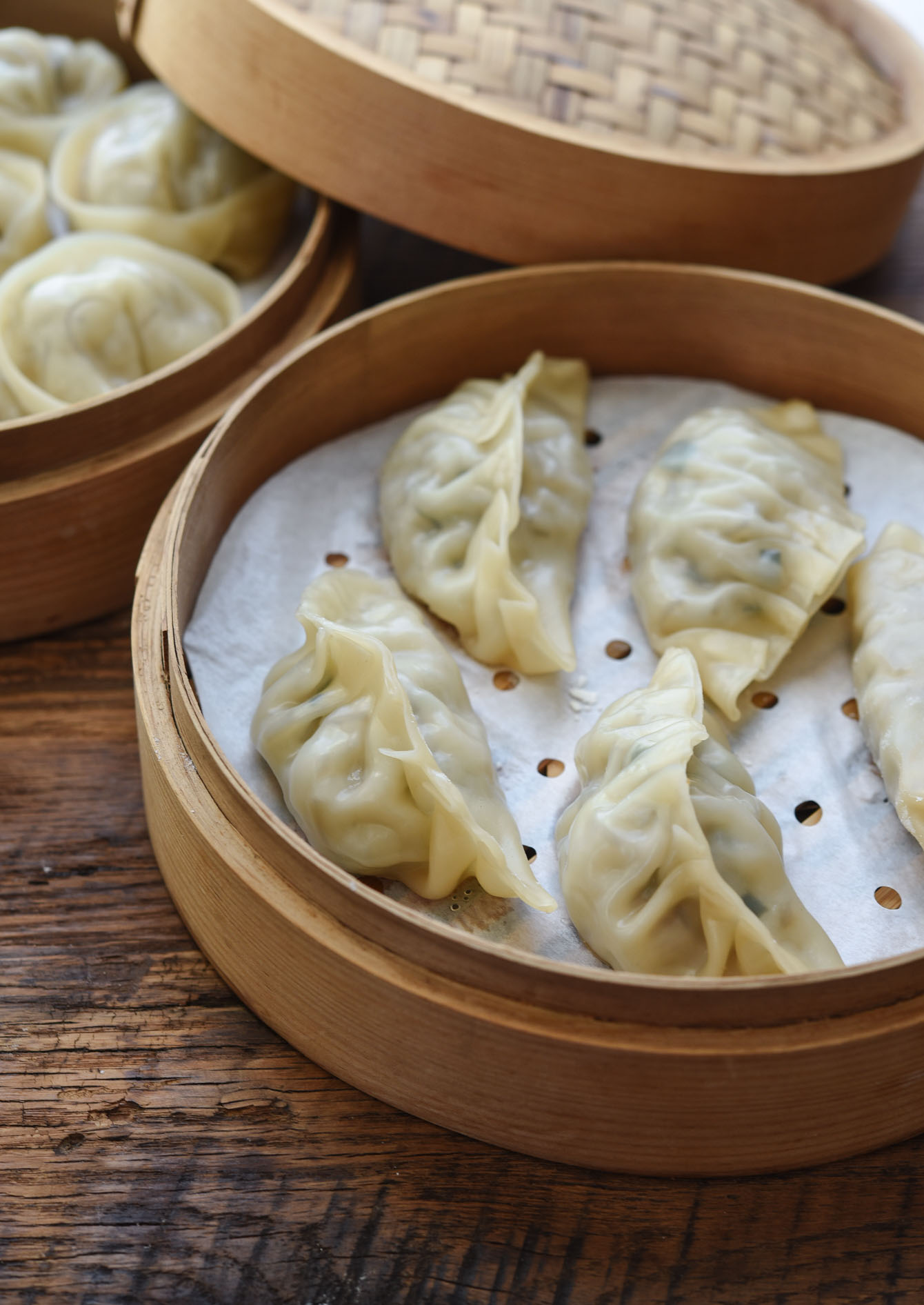
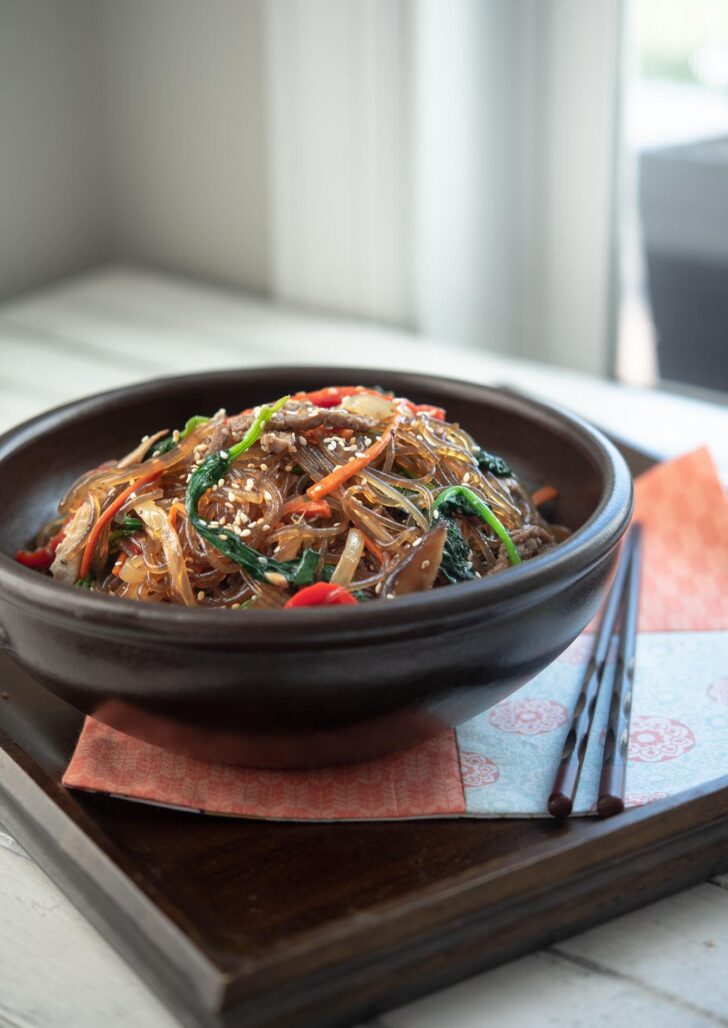
Get new recipes via email:
Sure, you can buy frozen Korean dumplings at the store now, but they don’t compare to the flavor and texture of freshly made ones. That’s why we always make extra and freeze them—so we can enjoy them anytime, all year round.
You can use these mandu to make mandu-guk (Korean dumpling soup) or add them to a bubbling pot of budae jjigae (Korean army stew), where mandu adds extra heartiness. They’re also perfect for pan-frying into gun-mandu (crispy pan-fried dumplings), also known as yaki mandu—great for snacks or party platters.
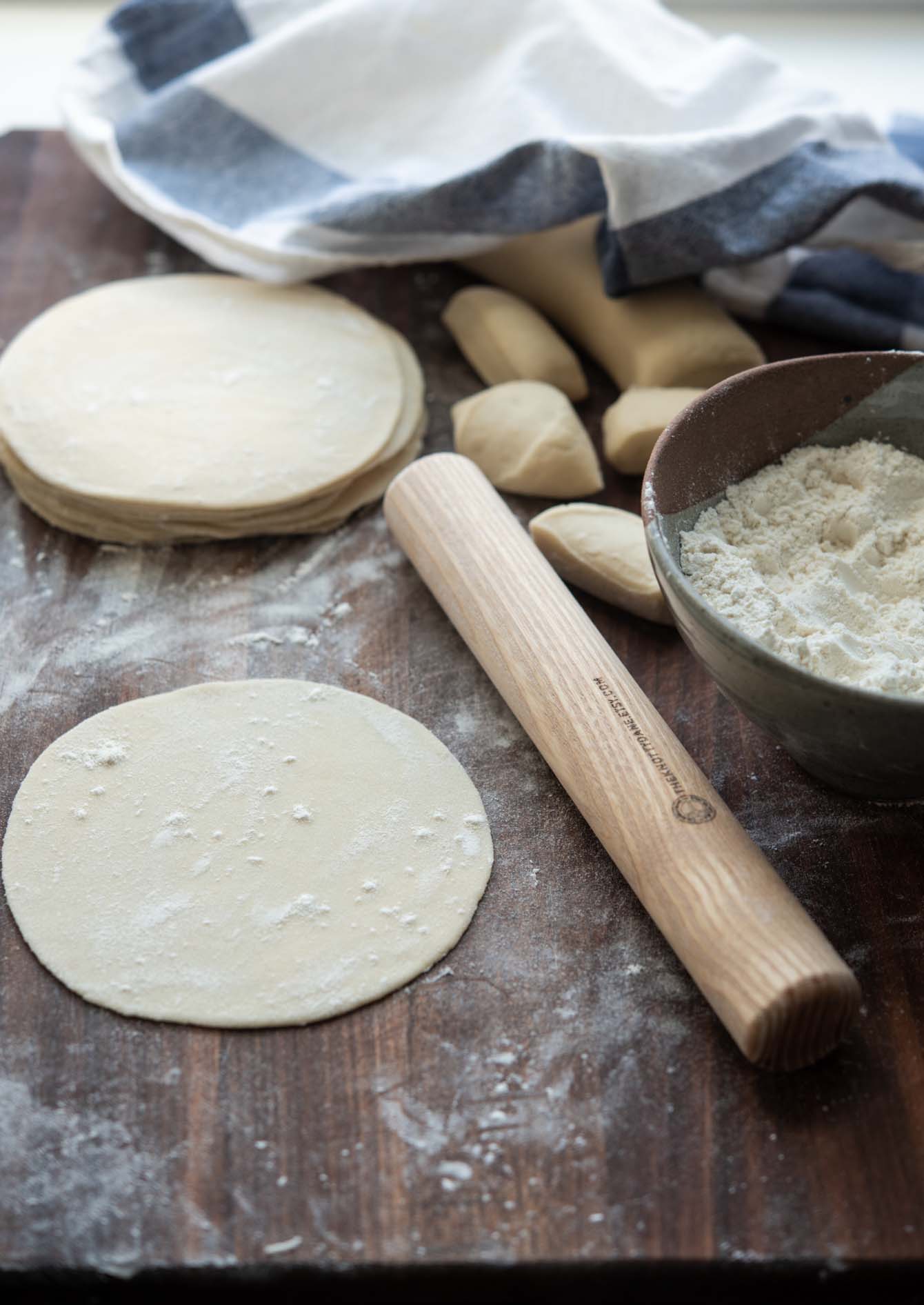
Dumpling Wrappers for Mandu
Good mandu starts with the right wrapper. I always remember how my mother would make dumpling wrappers from scratch—and back then, most Korean home cooks did the same.
Pre-made wrappers weren’t so common, so making your own mandu-pi (만두피) was just part of the process. It gave the dumplings that soft, chewy texture we all loved, with just the right thickness to hold in the juicy filling without tearing.
If you’d like to try it yourself, I’ve shared my homemade dumpling wrapper recipe using flour, sweet rice flour, and cornstarch. It’s easier than you think and gives you that authentic Korean dumpling texture.
In a pinch, store-bought wrappers will work fine too. Look for ones around 5 inches (13 cm) in diameter to get the proper Korean-style mandu size and feel.
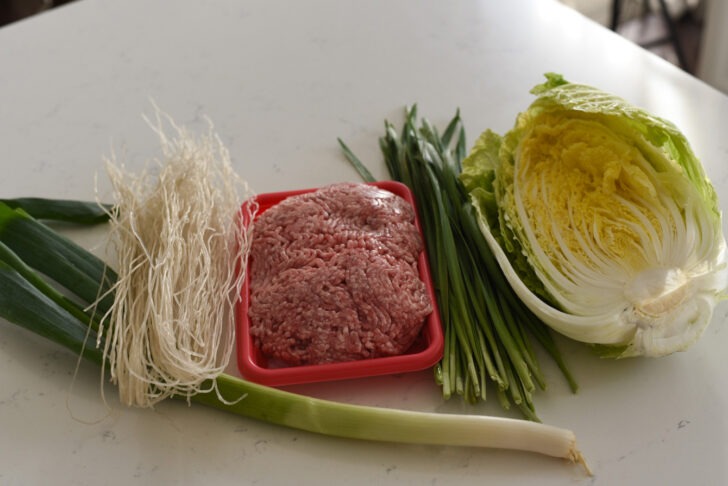
Mandu Filling
While the wrapper gives mandu its shape, it’s the filling, mandu-so (만두소), that brings all the flavor. This version is a classic pork dumpling (gogi mandu, 고기만두), made with ground pork, napa cabbage, Asian chives, and Korean glass noodles (dangmyeon).
For the best texture and taste, use ground pork with a bit of fat—an 80/20 ratio keeps the filling juicy during cooking. My recipe also includes chopped dangmyeon (Korean glass noodles), which adds a light, chewy texture unique to Korean dumplings.
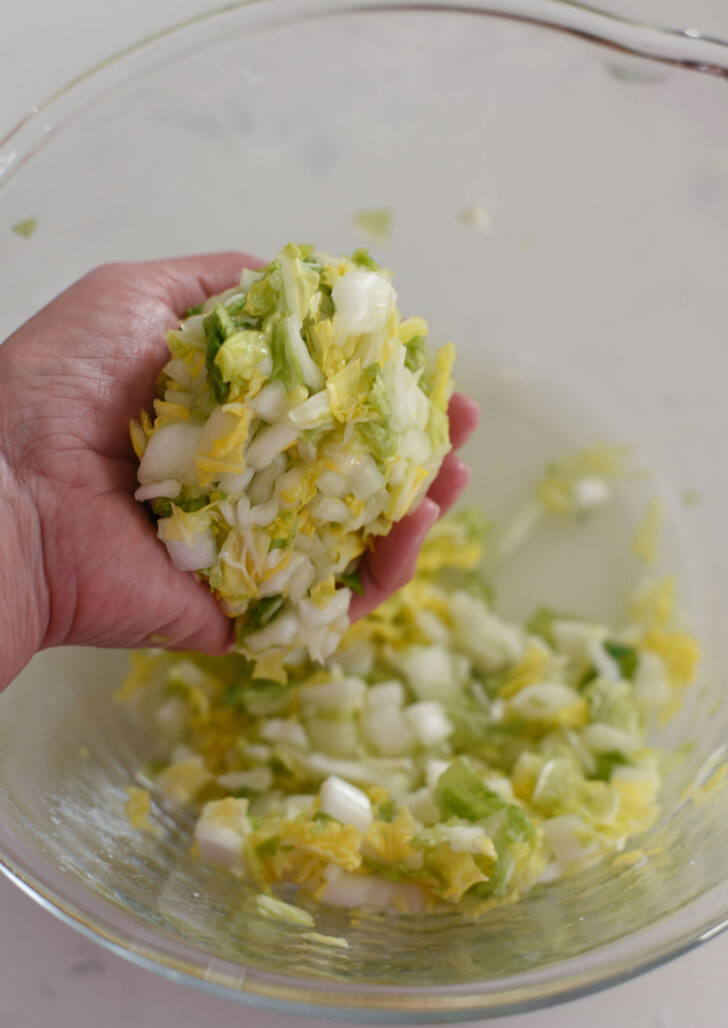
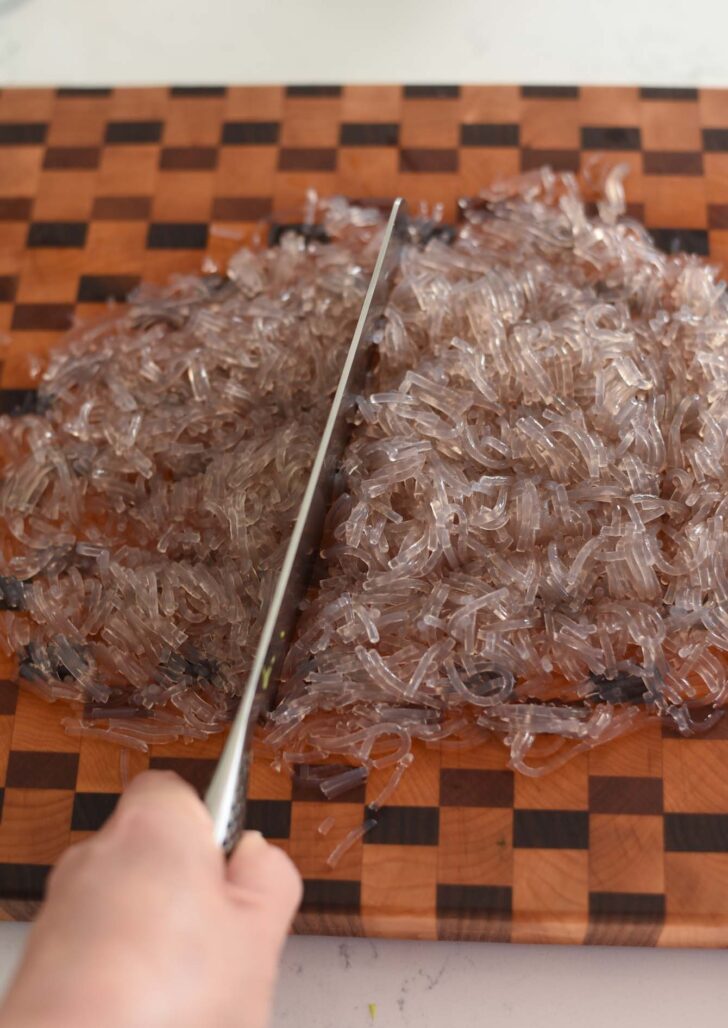
To make the filling, salt the chopped cabbage and let it sit for a few minutes, then squeeze out the moisture. Cook the glass noodles and chop them finely.
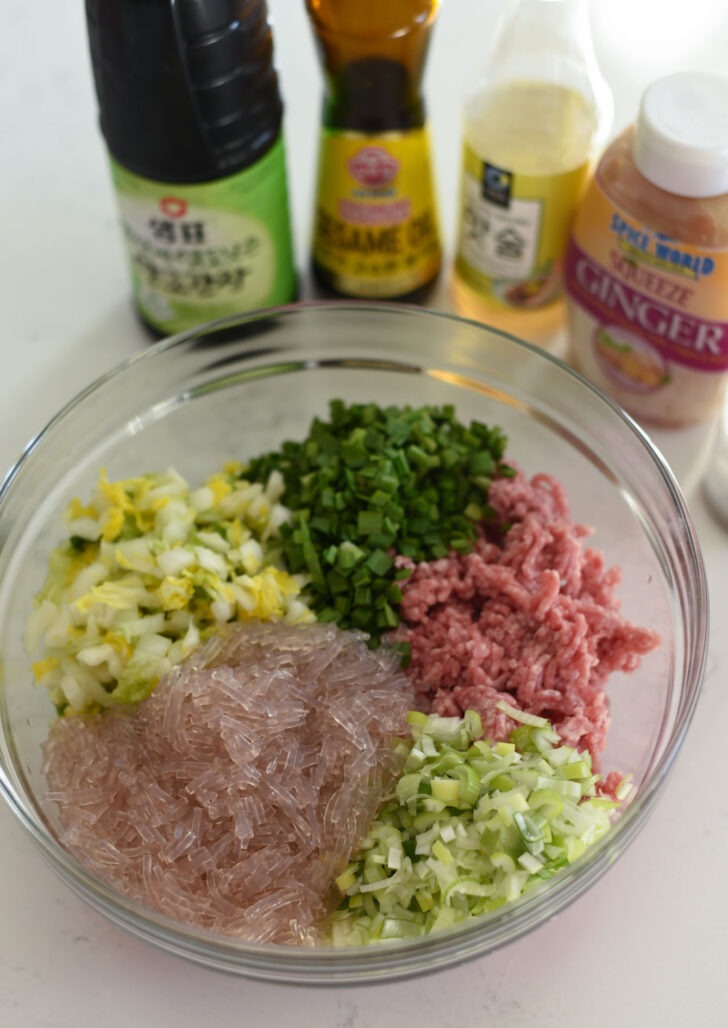
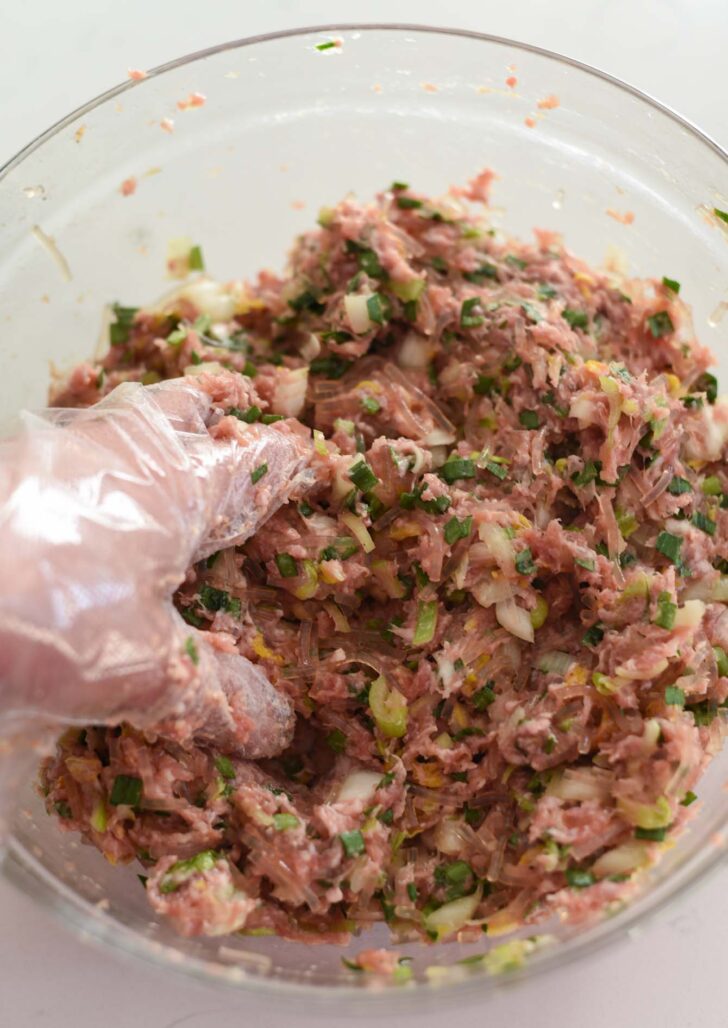
Combine all the filling ingredients in a mixing bowl. Season the mixture with classic Korean pantry ingredients like soy sauce, mirim, and sesame oil. These add a savory, nutty depth—especially important when you’re working with a mild base like pork and cabbage.
If you’re curious about other fillings, check out my kimchi mandu recipe made with tofu and aged kimchi—another popular variation in Korean homes.
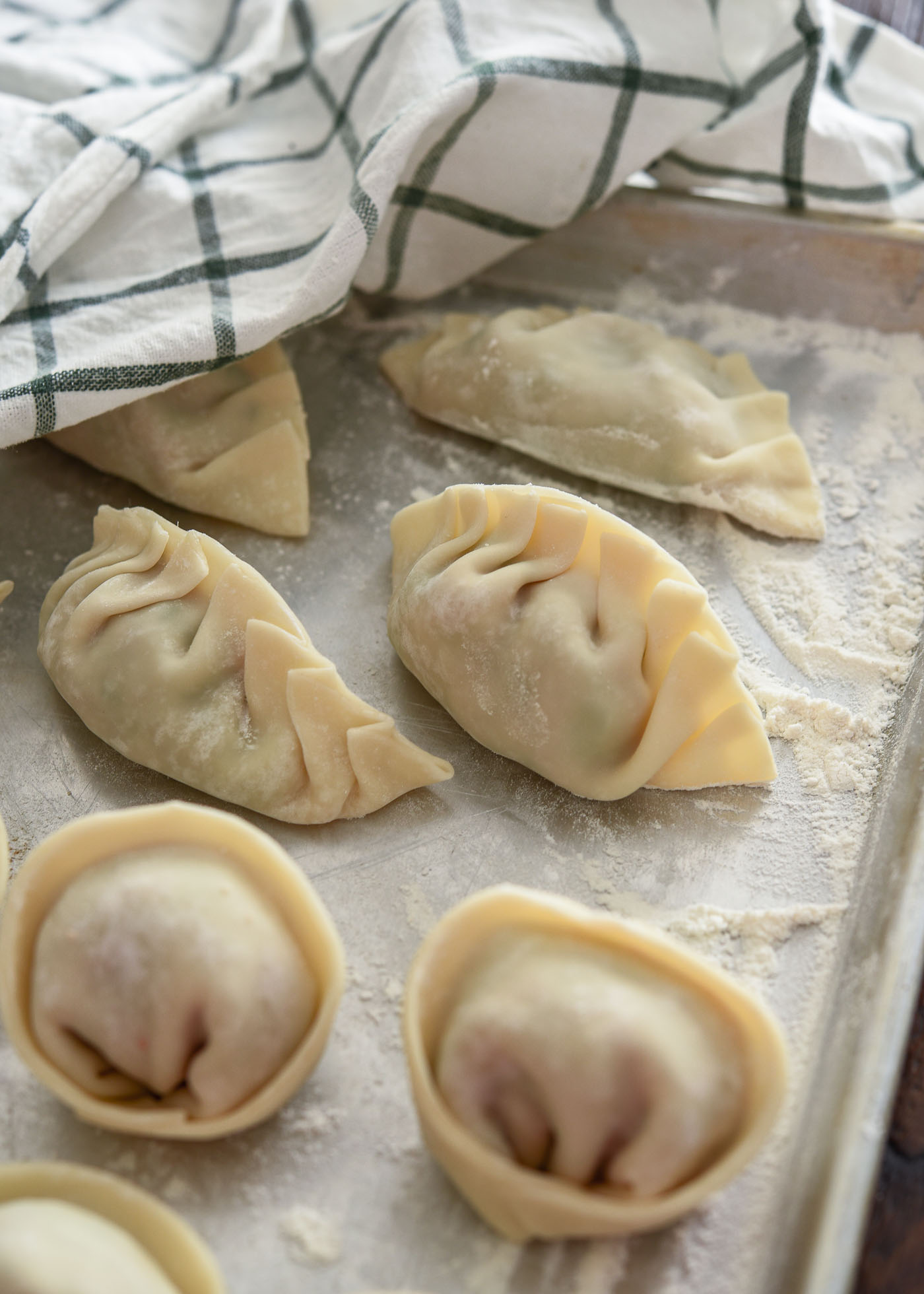
How to Fold Mandu (Korean Dumpling)
My mother used to say, “If you can fold a pretty dumpling, you’ll have a good-looking son. If you can shape songpyeon just right, you’ll have a beautiful daughter.”
Well—I ended up with both, so maybe she was onto something.
There are countless ways to fold Korean dumplings, from simple to elaborate. But when we make a big batch at home, I stick with these two classic styles—they’re easy, practical, and look great on the plate.
Scroll through the photos below for a quick visual guide.
Moon shape
This is the most common folding style for steamed mandu or dumpling soup (mandu-guk).
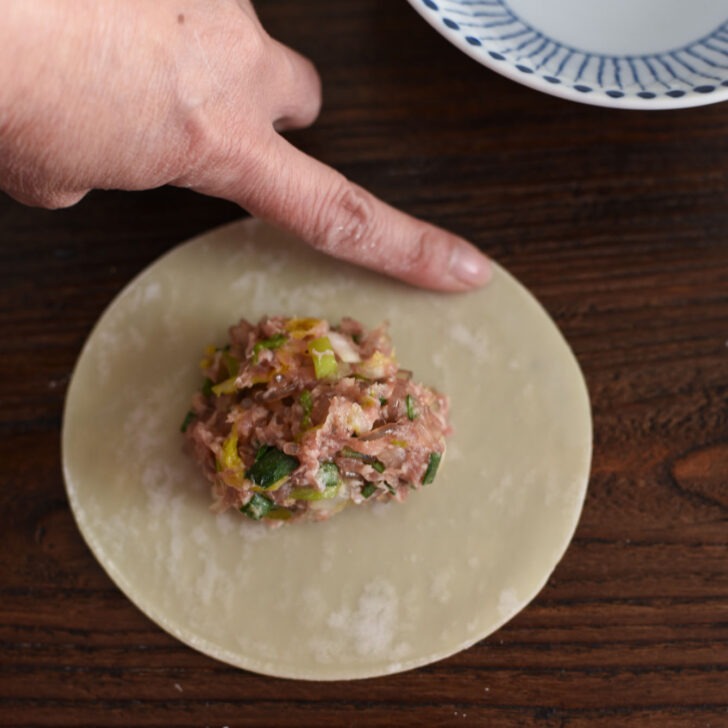
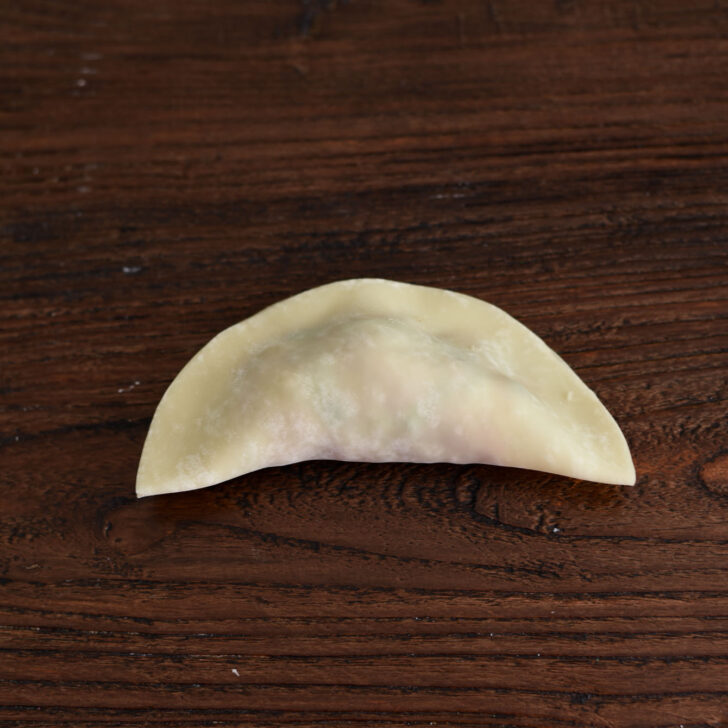
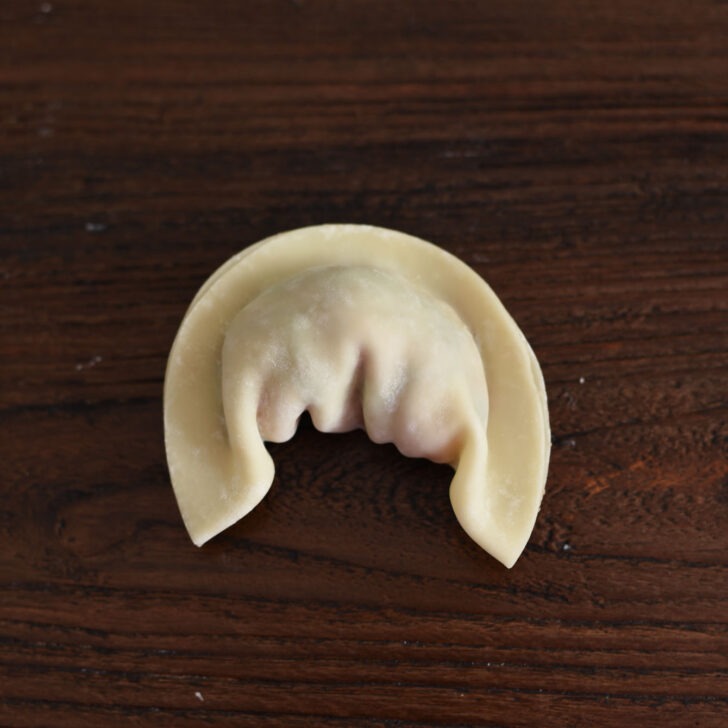
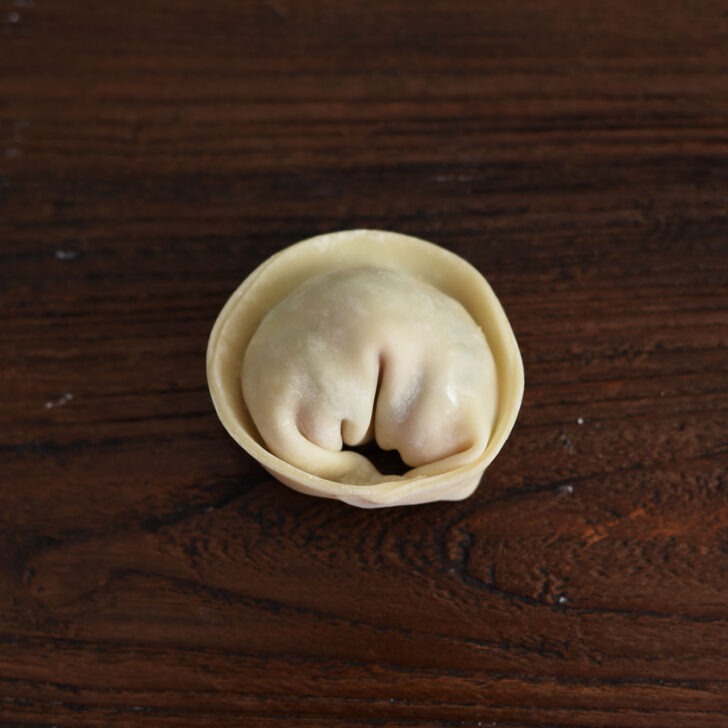
To make the shape, add filling, wet the edges with water, fold the wrapper in half, and bring the ends together to form a crescent. Easy, right?
Pleated shape
Great for pan-fried dumplings (gun-mandu) or steaming when you want something a little fancier.
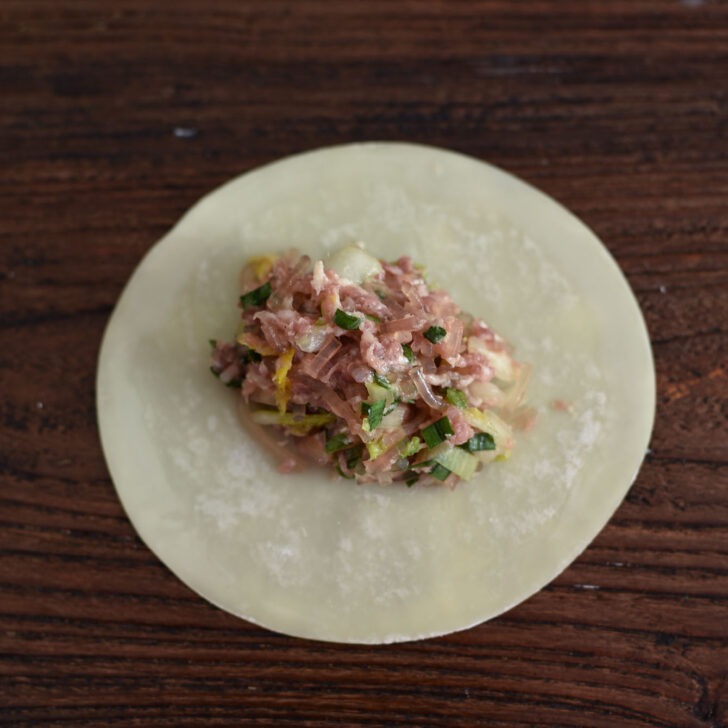
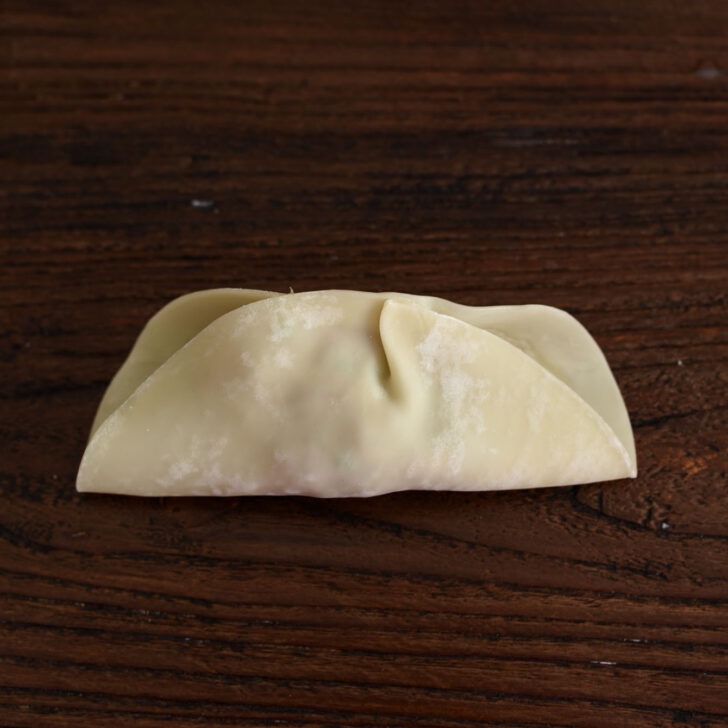
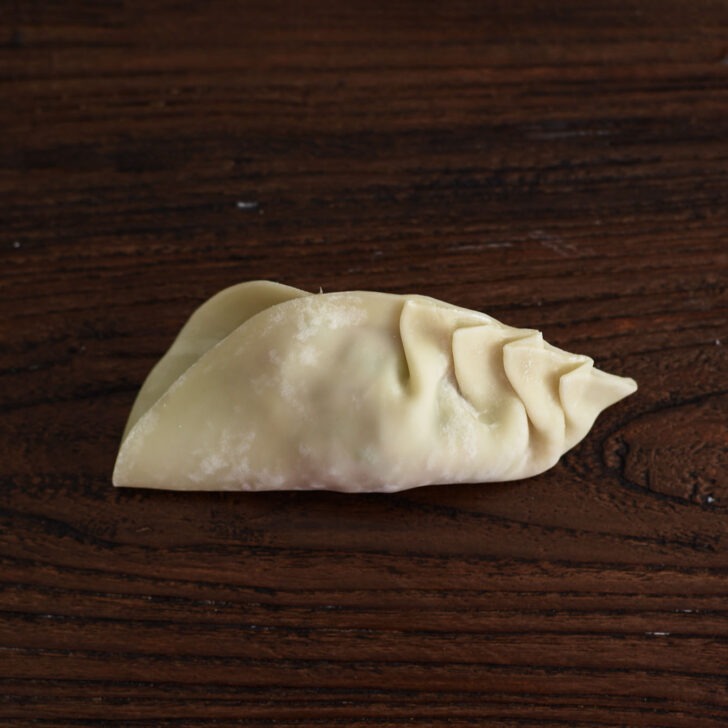
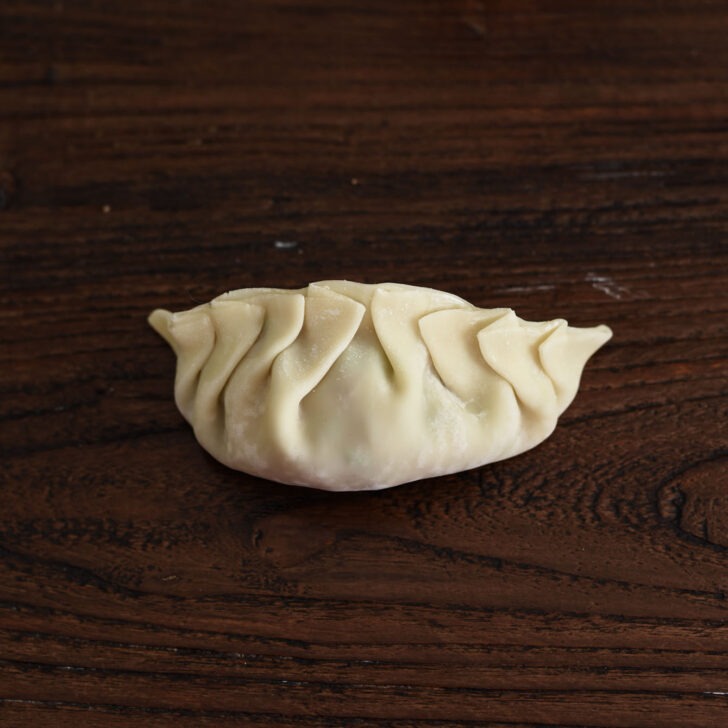
For the pleated style, repeat the same with the filling, then fold the wrapper in half and make small pleats toward the center on each side.
Tip: If you’re new to folding dumplings, start with a smaller amount of filling—it makes sealing easier and helps prevent tearing.
Once you’ve shaped them, cook your mandu how you like—steamed, pan-fried, boiled, or deep-fried. For detailed, step-by-step instructions, check the recipe card below.
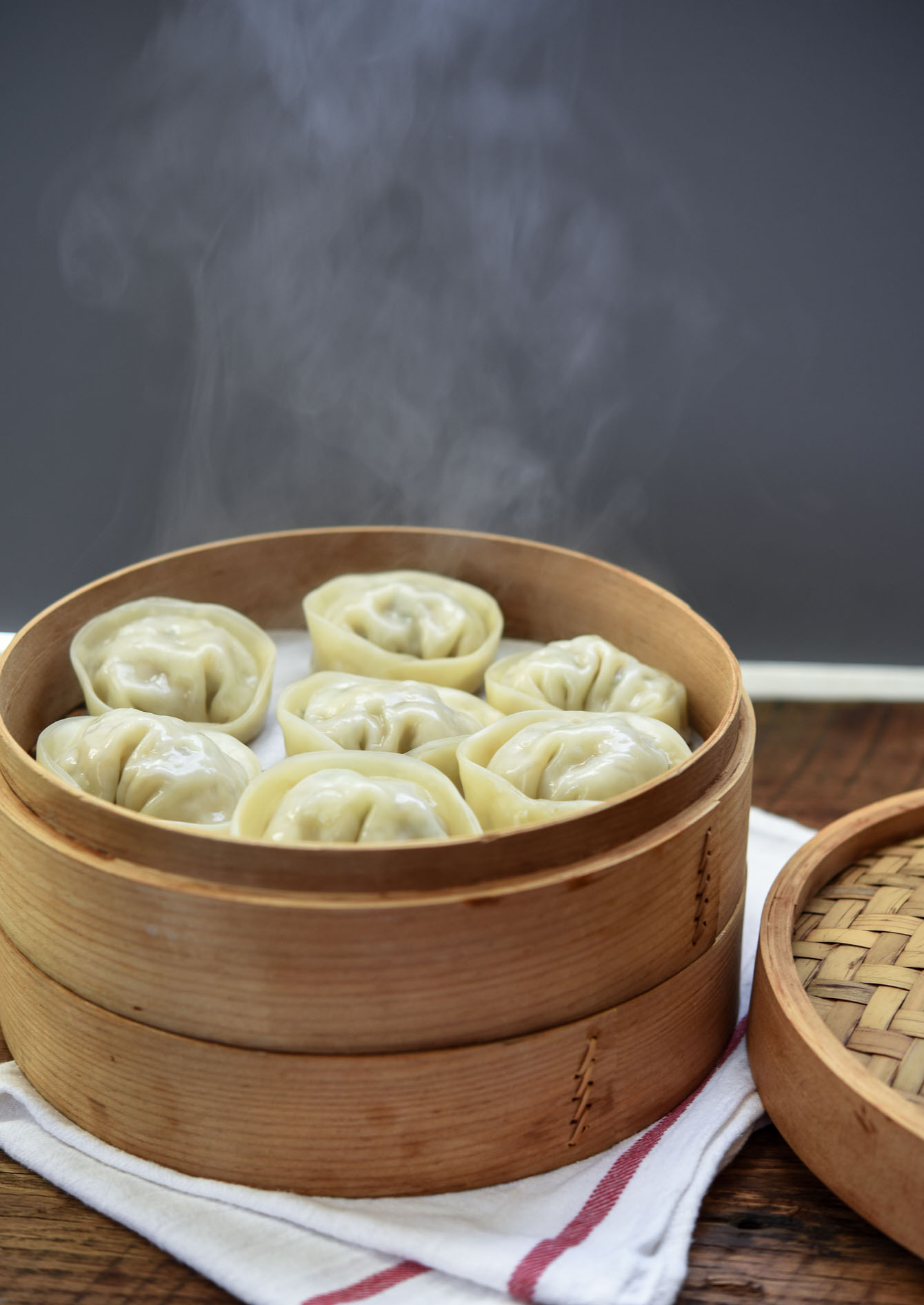
What to Serve with Mandu
These dumplings are best enjoyed hot, with a simple mandu dipping sauce made from soy sauce, vinegar, and a touch of Korean chili flakes (gochugaru). It’s salty, tangy, and just spicy enough to complement the juicy filling.
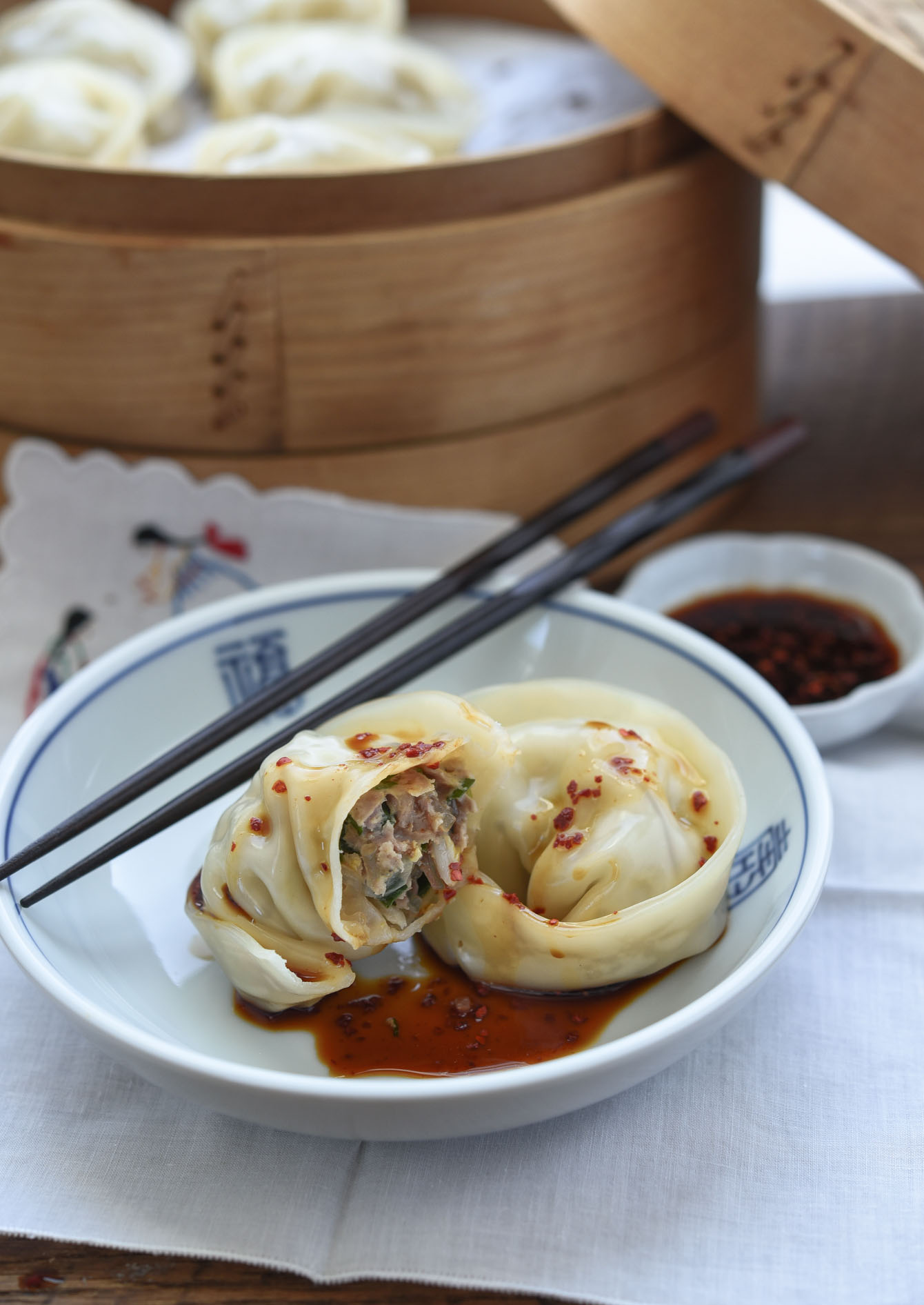
Freezing Tips
If you’re making a big batch (which I always do), freezing mandu is a great way to enjoy them later without the extra work.
To freeze, place mandu on a floured tray in a single layer so they don’t stick. Freeze until solid, then store in bags up to 3 months. No need to thaw—just cook a bit longer from frozen.
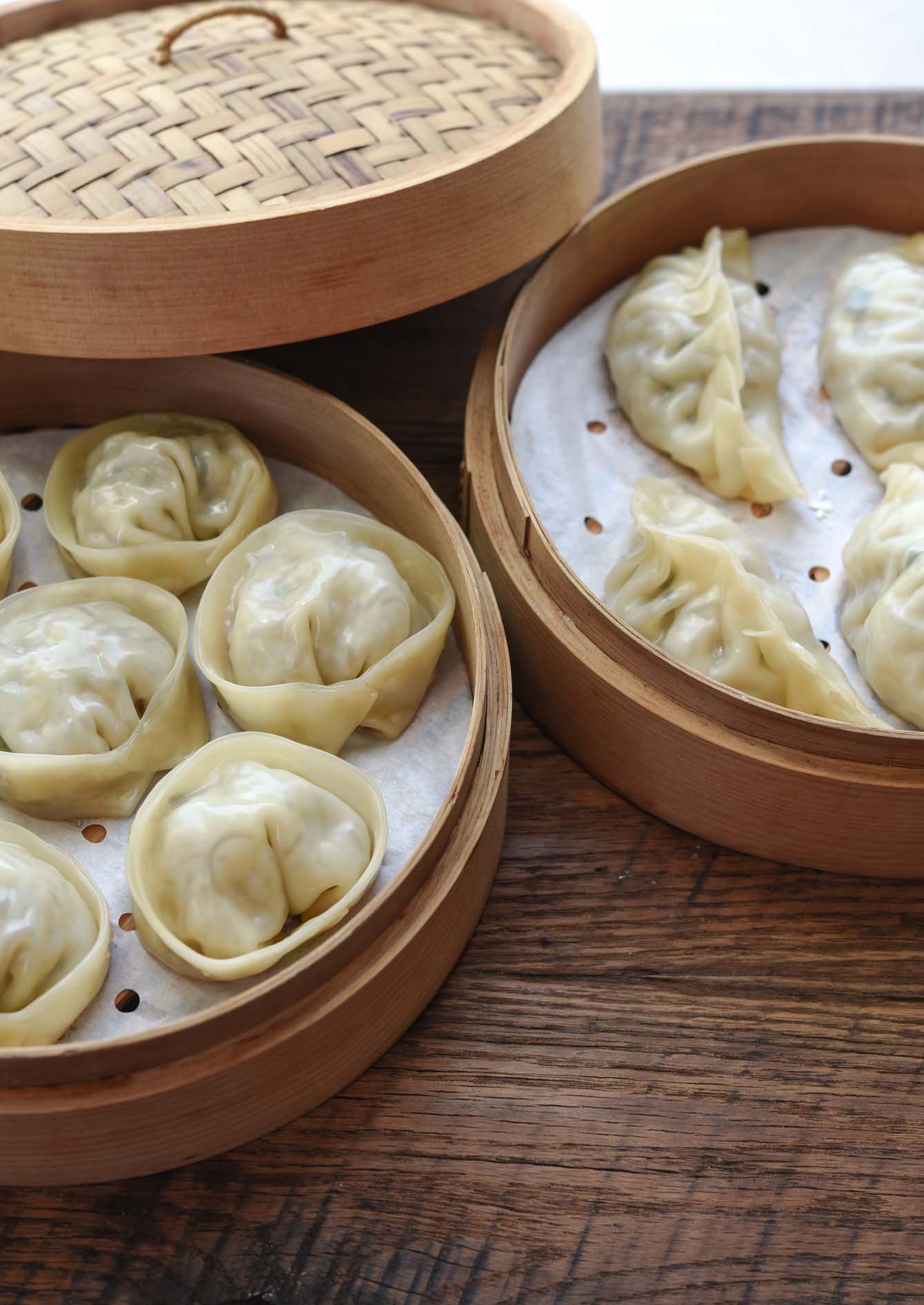
Love this recipe? Rate it and share your experience in the comments below! On Instagram? Tag me to showcase your creation. For more delicious recipes, subscribe to our newsletter!
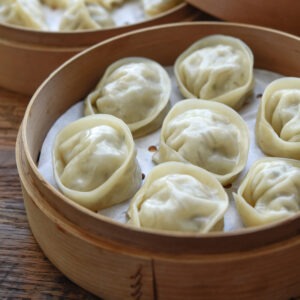
Homemade Mandu (Korean Dumplings)
Ingredients
- 40 Korean dumpling wrappers, about 5-inch (13 cm) diameter
For mandu filling
- 7 oz (200 g) napa cabbage
- 1 tsp (5 g) salt
- 3 oz (85 g) Korean glass noodles (dangmyeon)
- 1 1/2 lb (680 g) minced pork
- 1 cup (25 g) finely chopped Asian chives
- 1 cup (80 g) finely chopped Asian leeks or green onion
- 2 tbsp (30 ml) soy sauce
- 2 tbsp (30 ml) sweet rice wine (mirim)
- 1 tsp (5 g) ginger paste
- 1 tbsp (15 ml) sesame oil
- 3/4 tsp (1.5 g) black pepper
For dipping sauce
- 4 tbsp (60 ml) soy sauce
- 2 tbsp (30 ml) rice vinegar
- 2 tsp (4 g) Korean chili flakes (gochugaru), optional
Equipment
Instructions
To make the mandu filling
- Chop napa cabbage very finely and put it in a mixing bowl. Sprinkle 1 tsp salt and toss together; let it sit for 10 minutes. When the cabbage becomes lifeless, squeeze it out to get rid of moisture.
- Boil Korean sweet potato noodles according to the package directions, about 6-7 minutes. Rinse in cold water and drain well. Chop into small pieces.
- Put pork, cabbage, chives, leeks, and noodles in a large mixing bowl. Season with soy sauce, sweet rice wine, ginger, sesame oil, and pepper; mix well with your hand until all the ingredients are well incorporated. Note: This recipe makes 40 large dumplings.
To shape half moon dumplings
- Put a heaping tablespoon of filling in the middle of wrapper, wet the edges of wrapper with water using your finger. Fold the wrapper in half and pinch the edges together. Bring the both ends toward the center. Pinch the ends together to complete.
To shape pleated dumplings
- Put some filling in the middle of the wrapper and wet the edges with water using your finger. Bring one edge to the other and pinch in the center first, then make a small pleat on one side facing toward the center. Continue to make more pleats, usually about 4 pleats. Create the same number of pleats on the other side, facing the pleats toward the center.
Dipping sauce
- Meanwhile, make dipping sauce to go with dumplings. Combine all the sauce ingredients and drizzle it over dumplings.
Cooking Method Options:
- Steamed (jjin-mandu): Line a bamboo steamer (or regular steamer) with steam liner or a kitchen cloth to prevent sticking. Place dumplings without touching. Set the steamer over simmering water, cover, and steam for 5–6 minutes until fully cooked.Pan-Fried (gun-mandu): Heat 1–2 tablespoons of oil in a skillet over medium heat. Place dumplings flat-side down and cook until golden brown on the bottom (about 2–3 minutes). Add 2–3 tablespoons of water, cover with a lid, and steam for another 3–4 minutes until the water evaporates.Deep-Fried (tuigin-mandu): Heat oil to 350°F (175°C). Fry dumplings in batches until golden and crispy, about 3–4 minutes. Drain on paper towels before serving.Boiled (mul-mandu): Bring a large pot of water to a boil. Add dumplings and stir gently. Cook until they float to the surface (about 4–5 minutes). Remove with a slotted spoon and serve hot.

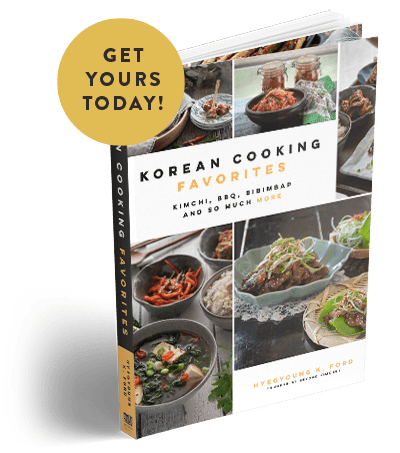
Thank you for this recipe. I’ve been looking for a mandu recipe that is a little more similar to Chinese dumplings and this is it. Instead of all pork, we used 1 lb pork and 1/2 lb minced shrimp. It turned out amazing! The best dumpling recipe I’ve tried, and I’ve tried a lot!!!
Hi Nina,
I’m so glad this mandu recipe was exactly what you were looking for! This is how I always make my mandu, and it’s been a hit with so many people. 😊
Looks yummy… will try it… I myself is a dumpling wrapper, now my daughter… would love to try and make it for her. 🙏
Making this for my Korean best friend this weekend for his birthday, one question though. When you say freeze is that before or after the steaming? Is it possible to fill and shape the dumplings, refrigerate overnight and stream the next morning?
You can freeze the dumplings before steaming. Make sure that dumplings won’t touch each other to prevent from sticking. You can also shape the dumplings and store in the refrigerator and steam next day. Thanks.
감사합니다 – (gam-sa-ham-ni-da) Holly!
Out to buy ground pork, though 1.5 lbs is not sold here…..ground meats are packaged at 1lb. Will just adjust the recipe accordingly!
Hi Philip
You can use 1 lb of ground pork and adjust the recipe accordingly. Or get 2 packages and use 1.5 lb, and save the rest for another use, which I often do. Thanks!
I will be trying this recipe this week. Thanks for your hard work.
I just happened to travel to the nearest Asian market and picked up glutinous rice flour – not even knowing it is what is used for mandu….I use rice flour in bread baking to handle the wet dough.
One question. I am growing Chinese garlic chives. Are these the chives mentioned in this recipe? I find them so dry and hard….I would think they would need to be blanched before using in the dumpling….or perhaps cut small enough it won’t matter?
Thanks again!
Hi Philip
Yes, Buchu is Chinese garlic chives I used in the recipe. You will need to chop them very small, about 1/2 inch in length. Raw garlic chives are dry and hard as you mentioned, but once cooked, they become soft and pliable, and very aromatic. Hope this helps and good luck with making Korean dumplings!
I lost my Korean Mother a little over a year ago. She tried to teach me her methods for mandu and I think I got most of it down. But, your pictures and directions on how to form the mandu are excellent and I need to practice more! She never suggested sweet potato noodles in ours – but we always had chop chae (sp??) with those noodles. I am so glad I found your blog – even at the ripe old age of 66! I see I have lots to learn still and then I can pass the methods and recipes down to my daughter. Thank you for sharing everything in Korean cooking!
I just made these today and my family LOVES them. I had to use dried chives instead of fresh Asian chives, and grape juice instead of sweet rice wine but it still tasted amazing to us. My great-aunt said that they tasted as good as restaurant dumplings. I’ve never had dumplings before this, now I’ll be comparing every other kind of dumplings I try to your Mandu. The half-moon shaping was by far the easier method to me. Thank you so much! And I can’t wait to try more of your recipes.
Hi Emma
I am so glad to hear that you tried my recipe and loved it. Yes, half moon shape is the easiest one to make. Hope you get to try other recipes from my site soon. Let me know if you have any question regarding my recipes. Thanks for the comment.
Is there any replacement for Asian chives as there not available where I’m from??
Hi Kacie
You can use finely chopped green onion instead of chives. Thanks.
Hello! I’m making these today, and only have rice vermicelli, will that be ok, or should I just omit the noodles?
Thank you!
Hi Michelle
You can just omit the noodles. Rice vermicelli is different than glass noodles and it gets soggy quickly.
what is ginger puree?
Ginger puree is a store-bought pureed ginger, usually sold in a tube or jar. You can replace it with grated fresh ginger (but use a slightly less amount than specified).
Thanks for the recipe. The Mandu were perfect and so much fun to make!
I have a question. Recently I saw the Korean series Chocolate and had great fun watching the food prep and the variety they ate. There was one dish that translated as Dumpling stew. It looked like Mandu in a broth. Any thoughts of what kind of broth that could be? And some of the Mandu were ENORMOUS,,
Hi Marian
I’m so glad to hear the my mandu recipe turned out perfect for you. It surely is fun to make, isn’t it?
To answer your question..
Yes, there is a dish called mandu guk (dumpling soup). It is easy to make if you have dumpling already made. All you need to to make soup stock to simmer the dumplings in. The typical stock we use for dumpling soup in Korea is the anchovy stock. Check my Korean soup stocks for more information.
You can also use chicken or beef stock as the dumpling soup stock as well if anchovy is not your thing. Kimchi on the side is a must when you serve Korean dumpling soup. Hope this helps.
I have been looking for dumplings, this recipe is amazing
Haha – I love your mother’s comments about having a good looking son and daughter! Based on these dumplings, I think it’s safe to say you do indeed have a good looking son and daughter. These look amazing! I’ve never made dumplings at home from scratch, but the pandemic seems to be a good excuse to tackle a project like this. My mouth is watering just thinking about these!
Thanks David for your nice comment. I do, indeed, have beautiful son and daughter. Making homemade dumplings every New Year wishing for beautiful kids did seem to work!
Hope you get to try. It’s time consuming, but therapeutic and relaxing work to do with loved ones. You will be rewarded.
Hello, I made your dumpling wrapper and filling for Valentine’s day and Lunar new year. So good. I don’t know why I was intimidated in making dumplings. My daughter and I made them together. It took a bit of time getting used to rolling out the wrappers. I finally got it circular towards the end. The filling is very good and juicy. My daughter, a teen, said it was good and that’s huge. I’m excited to make more and freeze. Thank you!!
That’s so neat to hear you and your daughter loved my dumpling recipe. How sweet it is to make dumplings together as a family! I know making dumplings from scratch can be intimidating at first. But I think, with a little practice, anyone can make beautiful dumplings. Glad that you are making more. Enjoy!
Quick update, my husband and son came back later in the day. Son, gobbled them up. Loved the filling. And husband kissed me and told me to make more. Followed your recipe exactly.Thanks again. Sending you a big hug!
Happy Lunar New Year Holly! What a fabulous post with great tips and step by steps for making Korean dumplings. Photos are just gorgeous too. Wishing you a super weekend ahead.
Thank you. Wishing you a happy healthy New Year to you as well.
I love all types of dumplings and these mandu are are no exception! They look delicious! Love the pleating instructions too. Thanks for stopping by my site, Holly! Glad to meet you here 🙂
Thank you Michelle. Dumplings of all kind are the best thing in the world!
I love dumplings of every sort. These sound great. My son is home from Taiwan and we plan on making a bunch this weekend!
I used to live in Taiwan, about 25 years ago, and I miss that place a lot. Good food!
I am sure it is so nice to have your son coming home from far away. Hope you have a good time with him making dumplings. How fun!!
They look very yummy and just remind me that I haven’t made or had dumplings in a while. Wish I could taste some of yours now 🙂
I wish I can share with you, too. Hope you get to try some dumplings soon.
Love, love, LOVE dumplings! Any and all. 🙂 These look so terrific — thanks.
I can eat any dumplings all the time, too.
Fabulous! I used egg roll wrappers and they were fine. Also couldn’t find sweet potato noodles, so used ramen. Only problem, they take hours to prepare and seconds to eat!